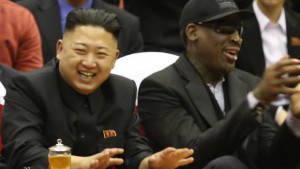 By Evin Demirel
By Evin Demirel
In 29 years as NBA commissioner, David Stern has led his league to unprecedented heights by opening its doors to nearly every corner of the world.
He expects its next generation of stars, some of whom just finished playing on their franchises’ summer teams, to continue fueling growth through diversity and global expansion. A quick scan at the statistical leaders for the NBA Summer League, which wrapped Monday in Las Vegas, seems to indicate everything is on track.
There are foreigners such as Canadian Kelly Olynyk, Lithuanian Jonas Valanciunus (named Summer League MVP) and German Dennis Shroeder. There is an American, Jeremy Tyler, who played abroad after skipping college altogether. Other Americans, like C.J. McCollum of Lehigh University, starred at the mid-major collegiate level. This fall, McCollum will start his career in Portland beside NBA Rookie of the Year Damian Lillard, who played at Weber State University. Mid major, high major, when it comes to predicting future NBA stars, the difference seems increasingly minor.
But the path has not widened for all.
The NBA player who hails from a small college has all but disappeared. In past decades, the NAIA and schools from what is now NCAA Division II and III produced All-Stars like Earl Monroe, Dick Barnett, Jerry Sloan, Walt Frazier, Nate Archibald and Willis Reed. Later, Terry Porter, Dennis Rodman and Scottie Pippen came from these ranks.
But in the 21st century, the well has gone dry. There has not been a player from DII, DIII or NAIA to make a substantial splash in the NBA since Flip Murray, Devean George and Ben Wallace nearly a decade ago. As those players have retired, it appears nobody will step in to carry the small college banner into the next era.
Indeed, small college alumni are having a harder time than ever even making an NBA squad: Of the 10 such players in Las Vegas, only two of them – Glen Dandridge of now-defunct Lambuth University and Othyus Jeffers of Robert Morris University – averaged more than 10 minutes a game. Jeffers led the pack with 8.3 points a game for Minnesota but none of these 10 players – including John Stockton’s son Michael Stockton – appear to be a favorite to make a final roster in October.
How did this happen?
An influx of foreign players in the last 30 years is a big reason, says John McCarthy, director of the NAIA’s Division I Men’s Basketball National Championship. Perhaps the most important reason, though, is the NCAA Tournament has become enormously profitable in recent years and more and more small colleges have elbowed into Division I to get a piece of the pie. Many of the historically black colleges which produced Reed, Monroe, Frazier et al have migrated to the lower fringes of Division I – which now swells at about 340 programs and more than 5,000 players.
The elevated cachet of Division I, due to boosted financial dividends and exponentially increased media attention, have at the same time downgraded the appeal of the lower divisions and National Association of Intercollegiate Athletics. More high school and summer league coaches believe the only route to the pros is Division I, and they pass those convictions to their players – who have grown up watching only D1 games on TV.
This causes some recruits to play in Division I even when it’s not in their best interests. “I think that there are times where a Division II program may actually be a better fit for a player,” wrote McCarthy, who runs a small college basketball blog. “A good Division II program may be a be
tter fit for a player (academically, class-size, geographically, need for his position, coach, etc.), but a player will often choose the Division I program because of the label.” The player often finds the level of play at the top DII schools is higher than that at the lower tier DI program he might have left.
As a tribute to the NBA’s small college legacy – which unfortunately seems to be shrinking – below are the Top 16 small college NBA/ABA players of all time. I’ve limited the list to only players who played at schools that are still DII, DIII or NAIA today. That’s why you won’t see greats like Jerry Sloan, Dick Barnett and Maurice Stokes, Willis Reed and Bob Love, whose programs have since joined DI.
Since I’m ranking players based on performances during college and pro careers, you also won’t find scoring phenomenon Bevo Francis, who averaged more than 48 points a game for Rio Grande College in the 1950s. He chose not to play in the NBA.

16. Devean George
College: Augsburg (Minneapolis, Minn.)
NBA Draft: Round 1/Pick 23rd by Los Angeles Lakers
NBA Playing Career: 1999-2010
All-Star Appearances: 0
Career High Averages (for one season)
Points per game: 7.4
Rebounds per game: 4.0
Assists per game: 1.4
Steals per game: 1.0
Blocks per game: 0.5
43.2 % FG
39.0 % 3PT
George was a dominant scorer in Division III, averaging 27.5 ppg as a senior, but will forever be remembered as a sort-of-vital glue guy bench player during the Lakers’ 2000-02 threepeat. His career apex came in 2003-04, when he started 48 games and played nearly 24 minutes a game.
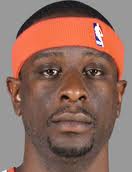 15. Flip Murray
15. Flip Murray
College: Shaw University (Raleigh, N.C.)
NBA Draft: Round 2/Pick 42 by Milwaukee Bucks
NBA Playing Career: 2002-10
All-Star Appearances: 0
Career High Averages
Points per game: 13.5
Rebounds per game: 2.5
Assists per game: 3.5
Steals per game: 1.4
Blocks per game: 0.3
44.8% FG
38.9% 3PT
As a senior, Murray set a Shaw University record of 23 ppg while racking up Division II Player of the Year honors. He made another splash as a Supersonic in 2003-04, when he scored 20 or more points 10 times in the season’s first 11 games (he started in absence of an injured Ray Allen). During the partial season Murray played for the Cleveland Cavaliers, he averaged nearly 37 minutes a game.
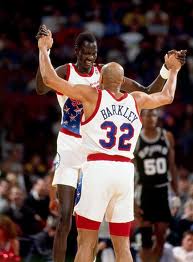 14. Manute Bol
14. Manute Bol
College: University of Bridgeport (Conn.)
NBA Draft: 1st time: Round 5/Pick 97 by San Diego Clippers (in 1983)
2nd time: Round 2/Pick 35 by Washington Bullets (in 1985)
NBA Playing Career: 1985-1995
All-Star Appearances: 0
Career High Averages
Points per game: 3.9
Rebounds per game: 6.0
Assists per game: 0.5
Steals per game: 0.4
Blocks per game: 5.0
60% FG
60% 3PT
The 7’6” Bol averaged 22.5 points, 13.5 rebounds, 7.5 blocks in leading DII Bridgeport to a 22-6 record in his one season there. His rookie season ended up being his best in the pros, and he remains the only player in NBA history with more blocked shots (2,086) than points (1,599).
Bol’s legacy reaches far beyond his record-setting 8’6” wingspan. He spent most of the money he made as a basketball player to alleviate the poverty and war afflicting the people of his native Sudan. He told Sports Illustrated in 2004 “God guided me to America and gave me a good job. But he also gave me a heart so I would look back.”
Indeed, when Bol’s fortune dried up, he raised quick cash through publicity stunts in which he turned himself into a humorous spectacle – horse jockey, hockey player, celebrity boxer.
As John Shields wrote for the Wall Street Journal after Bol’s death in 2010:
Bol agreed to be a clown. But he was not willing to be mocked for his own personal gain as so many reality-television stars are. Bol let himself be ridiculed on behalf of suffering strangers in the Sudan; he was a fool for Christ.
Shields noted many sportswriters covering Bol’s death from severe kidney problems labeled him a “humanitarian” rather than “Christian.. Shields argues Bol’s Christian faith is fundamental to his identity, and whatever good he did for man was an outcome of first and foremost serving God.
Similarly, the mainstream media has avoided stressing the faith of other famous athletes, Shields wrote. “The remarkable charity and personal character of other NBA players, including David Robinson, A. C. Green and Dwight Howard, are almost never explicitly connected to their own intense Christian faith. They are simply good guys.”
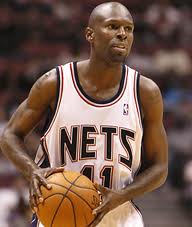 13. Darrell Armstrong
13. Darrell Armstrong
College: Fayetteville State University (Fayetteville, N.C.)
NBA Draft: Undrafted
NBA Playing Career: 1994-2008
All-Star Appearances: 0
Career High Averages
Points per game: 16.2
Rebounds per game: 4.6
Assists per game: 7.0
Blocks per game: 0.2
Steals per game: 2.2
44.1% FG*
36.8% 3PT
*Excluding 1995-96 season in which Armstrong played only 41 total minutes.
Averaged 16.4 points, 4.7 assists and 2.9 steals during his senior year in Division II. The waterbug-esque point guard broke into the league with Orlando, where he started for a few of his nine years. Most significantly, in 1999 Armstrong became the first NBA player to win the Sixth Man of the Year Comeback Player of the Year awards in the same year.
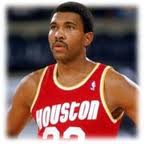
12. Robert Reid
College: St. Mary’s University (San Antonio, Texas)
NBA Draft: Round 2/Pick 40 by Houston Rockets
NBA Playing Career: 1977-91
All-Star Appearances: 0
Career High Averages
Points per game: 15.9
Rebounds per game: 7.1
Assists per game: 4.3
Steals per game: 2.0
Blocks per game: 1.0
49.2% FG
38.2% 3PT
Before guys like Barry Sanders and Michael Jordan retired (for the first time) near their athletic primes, there was Robert Reid.
And before former Celtics guard Delonte West worked at a big box chain store to make ends meet, there was Robert Reid.
The second-leading scorer* on the Rockets’ 1980-81 team, Reid abruptly retired before the 1982-83 season to devote more time to his Pentecostal beliefs. He ended up working at a discount store, on a construction crew and at a pharmaceutical firm while taking firefighting classes at local community college.
No surprise he un-retired the next season.
*Surprisingly, Reid was not that much better of a scorer during his DII college days than as a pro. In his best season at St Mary’s, he averaged 19.6 ppg, along with 10.3 rpg.
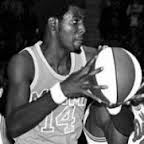
11. Wil Jones
College: Albany State (Georgia)
NBA Draft: Round 5/Pick 69 by Los Angeles Lakers
ABA Playing Career: 1969-76
NBA Playing Career: 1976-77
All-Star Appearances: 1 as ABA All-Star
Career High Averages
Points per game: 14.9
Rebounds per game: 10.4
Assists per game: 3.0
Steals per game: 1.3
Blocks per game: 1.0
48.3 % FG
77.5 % FT
One of the more dominant rebounders in NAIA history, Jones averaged 23.9 boards his senior season at Albany State. Although only 205 pounds, the 6-8 interior player also became of the ABA’s best rebounding forwards during his early years in Memphis. He then was an important role player on the Kentucky Colonels’ 1975 championship squad.
10 Commandments For Aquafic Basic Safety In Swimming Swimming Pools annd okulista sąd rejonowy
szczecin prawobrzeże i zachód. 10 Commandments
For Aquatic Basic Safety In Swimming Swimming Pools
Suffer from kidney disease? improve your kidney health naturally
click now https://twitter.com/soniaw17/status/353268126143623168
If you want to drill down a whole lot deeper on the small-college question, take a look at my 2007 book about small college basketball, Cinderella Ball. The issues are quite complex, but the common thread is money. Read the book. It’s the only one out there to take a hard look at this question.
I totally whiffed there, Bill. Thanks for reminding about Randy, who should have been in the Top 10. I sure wish there was an up-to-date resource listing all the DII, DIII and NAIA NBA/ABA players.
Nice article – but you should include Randy Smith – Buffalo St. Div. III – 1971 7th Round pick of Buffalo Braves – help consecutive games record of 906 for awhile – MVP of 1978 All- Star game.